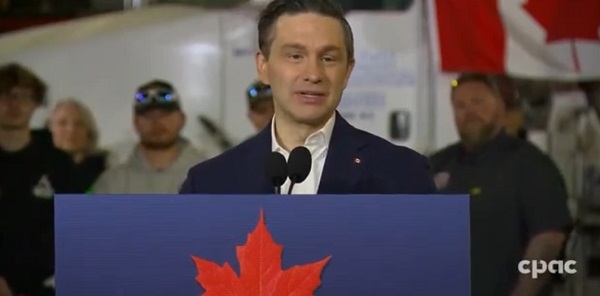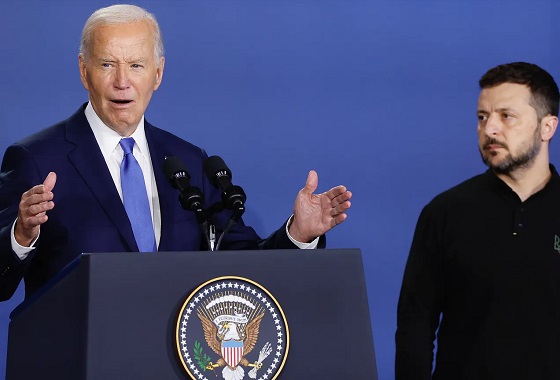News
RCMP looking for Mom and 4 kids

Red Deer RCMP seek public assistance to locate 28 year old Crystal Maurice and her children
Red Deer, Alberta – Red Deer RCMP are asking for public assistance to locate 28 year old Crystal Maurice and her four children. Maurice was reported missing from Red Deer on July 29 and was last seen in the city two days earlier. RCMP wish to verify the well-being of Maurice and her children. Maurice also goes by the name Kristal Mercy McCallum on social media.
Crystal Maurice is described as:
- First Nations
- 5’3” tall
- 150 lbs
- Blonde hair
- Brown eyes
She is accompanied by her four children: one year old male, Lamary Frencheater; 5 year old female, Alazne Maurice-Frencheater; 9 year old male, Eloquence Goodrunning; and 11 year old female, Phersayiss Goodrunning. Red Deer RCMP do not have photos of the children at this time.
If you have been in contact with Crystal Maurice or have information on her whereabouts, please contact the Red Deer RCMP at 403-343-5575.
International
Germany launches first permanent foreign troop deployment since WW2

 MxM News
MxM News
Quick Hit:
Germany activated a 5,000-strong armored brigade in Lithuania — marking its first permanent foreign military deployment since World War II. The move strengthens NATO’s eastern flank amid Ukraine’s ongoing conflict with Russia.
Key Details:
- The 45th Armored Brigade was formally launched outside Vilnius on Tuesday.
- Germany plans for the brigade to be fully operational by 2027 in Rūdninkai, near the Belarus border.
- The deployment marks a major policy shift for Berlin and a boost for NATO’s deterrence posture.
Diving Deeper:
Germany has officially entered a new era of military engagement, launching its first permanent foreign troop deployment since the end of World War II. The move, announced Tuesday, sees the activation of a 5,000-strong armored brigade in Lithuania as part of a broader NATO strategy to counter the perceived threat from Russia.
The newly formed 45th Armored Brigade was ceremonially inaugurated outside the Lithuanian capital, Vilnius. German Brigadier General Christoph Huber assumed command, overseeing the establishment of a temporary headquarters and unveiling the unit’s crest. “We have a clear mission: to ensure the protection, freedom and security of our Lithuanian allies on NATO’s eastern flank,” Huber said, adding that the unit’s presence also directly contributes to the defense of Germany and NATO as a whole.
The deployment follows a pledge made by Berlin in 2023 — a decision that broke with decades of postwar defense policy rooted in military restraint. German officials had long avoided permanently stationing combat troops abroad. That posture has changed in response to Russia’s ongoing war in Ukraine, which has turned the Baltic region into one of NATO’s most vulnerable frontlines.
Germany’s commitment includes more than just fighting forces. The brigade will also feature key support elements, such as a medical center, communications specialists, and command support units dispersed across multiple Lithuanian locations. Troops will initially operate out of temporary facilities, with a permanent base under construction in Rūdninkai, located roughly 30 kilometers south of Vilnius.
Currently, 150 German soldiers are already on the ground in Lithuania. That figure is expected to rise to 500 by the end of the year as the new brigade scales up operations.
Media
Top Five Huge Stories the Media Buried This Week

NEERA TANDEN: “The military requires accountability. It’s the most accountable organization. You are supposed to be accountable to higher-ups. Politics isn’t supposed to have to do with any of this, and the fact that that’s happening, that they’re just basically saying nothing to do here, is a big problem, I think, for those who believe in accountability.”
@ScottJenningsKY: “I think Republicans aren’t interested in any lectures on accountability in the military after the Biden administration. I mean, the bar for getting rid of a Secretary of Defense is apparently pretty high. You can get 13 people killed and go AWOL and not tell the commander in chief, and that’s not a fireable offense.”
“But these lectures about accountability and national security after letting 10 million people into the country who raped and murdered and committed violent acts and no remorse or accountability.”
NEERA TANDEN: “What are you talking about? They closed the border.”
#4 – Bill Gates says we won’t need humans “for most things.”
During an appearance on The Tonight Show, Jimmy Fallon asked Gates a pretty direct question: “Will we still need humans?”
Gates responded, “Not for most things. We’ll decide … There will be some things that we reserve for ourselves, but in terms of making things and moving things and growing food, over time those will be basically solved problems.”
VIDEO: @TheChiefNerd
REP JORDAN: “Is NPR biased?”
MAHER: “I have never seen any political bias.”
JORDAN: “In the DC area, editorial positions at NPR have 87 registered Democrats and 0 Republicans.”
MAHER: “We do not track the voter registration, but I find that concerning.”
JORDAN: “87-0 and you’re not biased?”
MAHER: “I think that is concerning if those numbers are accurate.”
JORDAN: “October 2020, the NYPost had the Hunter Biden laptop story, and one of those 87 Democrat editors said, ‘We don’t want to waste our readers and listeners’ time on stories that are just pure distractions.’ Was that story a pure distraction?”
Video + Transcript via @Kanekoathegreat
While you’re here, don’t forget to subscribe to this page for more weekly news roundups.
#2 – Utah becomes the first state to officially BAN fluoride in all public drinking water.
For decades, fluoride was accepted as a safe way to prevent tooth decay. Few questioned it.
But last year, in a dramatic legal twist, a federal judge ruled that fluoride may actually lower children’s IQ—and cited evidence that could upend everything we thought we knew.
That ruling sent shockwaves through the public health world.
Judge Edward Chen pointed to scientific studies showing a “high level of certainty” that fluoride exposure “poses a risk” to developing brains.
He ordered the EPA to reexamine its safety standards, warning that the margin for safety may be far too narrow.
At the center of the case: dozens of peer-reviewed studies linking everyday fluoride exposure—even at levels found in U.S. tap water—to reduced intellectual capacity in children.
It wasn’t just one paper. The National Toxicology Program, a branch of the U.S. government, also concluded that higher fluoride levels were “consistently associated” with lower IQ in kids.
They flagged 1.5 mg/L as a risk threshold. Some communities hover right near it.
In response to the growing evidence, Utah passed HB 81, banning all fluoride additives in public water.
The law takes effect May 7. It doesn’t ban fluoride completely. Anyone who wants it can still get it—like any other prescription.
And that’s the point: Utah’s lawmakers say this is about informed consent and personal choice.
This issue is no longer on the fringe. Across the country, cities and towns are quietly rethinking water fluoridation—and some have already pulled out. Utah is the first state to take bold action. It may not be the last.
The conversation surrounding fluoride has shifted from “Is it helpful?” to “Is it safe?” And for the first time in nearly a century, that question is being taken seriously.
VIDEO: @TheChiefNerd
#1 – RFK Jr. Drops Stunning Vaccine Announcement
Kennedy revealed that the CDC is creating a new sub-agency focused entirely on vaccine injuries—a long-overdue shift for patients who’ve spent years searching for answers without any support from the government.
“We’re incorporating an agency within CDC that is going to specialize in vaccine injuries,” Kennedy announced.
“These are priorities for the American people. More and more people are suffering from these injuries, and we are committed to having gold-standard science make sure that we can figure out what the treatments are and that we can deliver the best treatments possible to the American people.”
For years, the vaccine-injured have felt ignored or dismissed, as public health agencies refused to even acknowledge the problem. Now, there’s finally an initiative underway to investigate their injuries and to provide support.
Thanks for reading! This weekly roundup takes time and care to put together—and I do my best to make it your go-to source for the stories that matter most but rarely get the attention they deserve.
If you like my work and want to support me and my family and help keep this page alive, the most powerful thing you can do is sign up for the email list and become a paid subscriber.
-

 2025 Federal Election2 days ago
2025 Federal Election2 days agoLiberals Replace Candidate Embroiled in Election Interference Scandal with Board Member of School Flagged in Canada’s Election Interference Inquiry
-

 Courageous Discourse1 day ago
Courageous Discourse1 day agoEurope Had 127,350 Cases of Measles in 2024
-

 2025 Federal Election2 days ago
2025 Federal Election2 days agoPierre Poilievre Declares War on Red Tape and Liberal Decay in Osoyoos
-

 Podcasts22 hours ago
Podcasts22 hours agoTrump’s Tariffs: The US, Canada, and the rest of the world
-

 Alberta2 days ago
Alberta2 days agoIs Canada’s Federation Fair?
-

 2025 Federal Election22 hours ago
2025 Federal Election22 hours agoMark Carney Comes to B.C. and Delivers a Masterclass in Liberal Arrogance
-

 COVID-192 days ago
COVID-192 days ago5 Stories the Media Buried This Week
-

 International2 days ago
International2 days agoBiden Lied About Everything, Including Nuclear Risk, During Ukraine Operation













